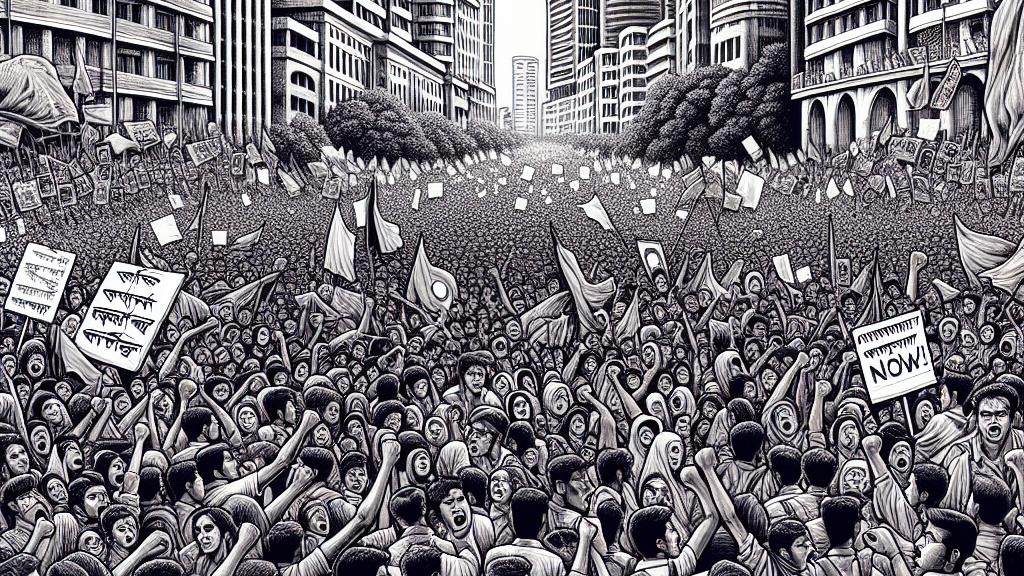Bangladesh on Fire: Thousands Demand Hasina's Head Amid Unrest!
Overview
- Massive protests erupt in Bangladesh, with thousands demanding the resignation of Prime Minister Sheikh Hasina.
- Demonstrators seek justice for the 150 victims of violent clashes and demand significant political reforms.
- Government faces intense scrutiny and accusations of excessive force used against peaceful protestors.

Explosive Protests Erupt in Dhaka and Beyond
In a dramatic turn of events, Bangladesh is witnessing some of its largest protests in years, primarily orchestrated by students and young activists. The demonstrations, centered in Dhaka but spread across the nation, are fueled by outrage against Prime Minister Sheikh Hasina amid calls for her resignation. Protesters are demanding accountability for the 150 lives lost during previous violent clashes over a contentious job quota system that disproportionately affected job seekers. Motivated by a fervent desire for justice and change, the youth are bravely facing the government’s crackdown, wielding banners that scream, "We want justice!" and urging their fellow citizens to join in.
Violent Clashes: Government's Response Under Fire
As protests intensified, so did the government's response, leading to violent confrontations between demonstrators and law enforcement. Police deployed rubber bullets and tear gas, resulting in injuries to dozens of protesters as tensions flared. Eyewitnesses recount scenes of chaos, with fires consuming government buildings, vandalism of police vehicles, and barricades erected in streets reminiscent of a battleground. The government, led by Hasina’s Awami League party, faces mounting pressure and criticism for its heavy-handed tactics, further fueling public anger and skepticism towards officials who are perceived to prioritize power over people’s rights.
Demand for Justice and Accountability Takes Center Stage
At the heart of these protests is a profound demand for justice—not just for those who lost their lives, but also for broader political accountability. Citizens argue that without an apology or acknowledgment from Prime Minister Hasina, tensions will only escalate. This unrest encapsulates a palpable dissatisfaction with government policies and a call for more democratic reforms, resonating with a generation that refuses to back down in the face of oppression. The world watches as Bangladesh grapples with its future, and it is clear that the actions taken by both the government and the protesters in the ensuing days will be pivotal in determining the nation’s path forward.

Loading...